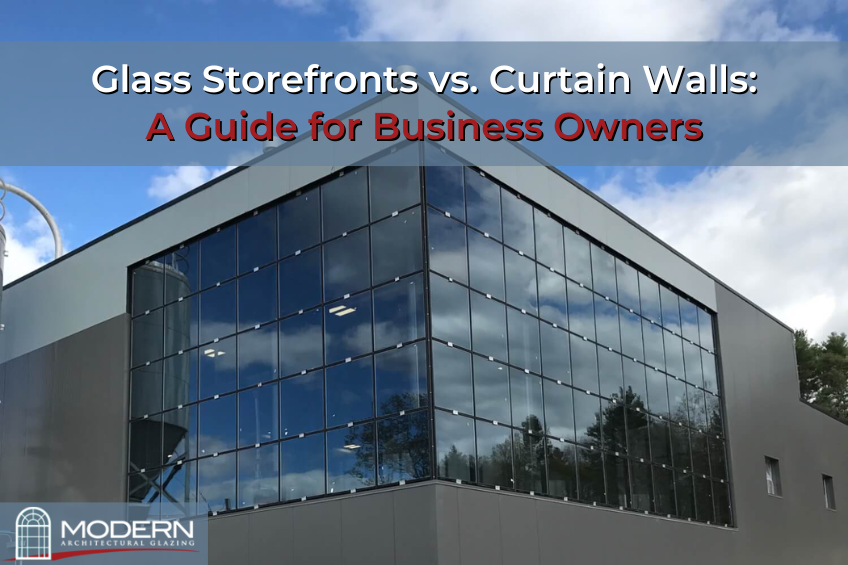Glass Storefronts vs. Curtain Walls: A Guide for Business Owners
As a business owner or real estate developer, making the right choice for your building’s façade is about more than just aesthetics—it’s about performance, durability, and creating a professional impression that aligns with your brand. That’s why understanding the difference between a glass storefront and a curtain wall system is critical when planning a new build or renovation.
Both options can completely transform how your building looks and functions. A glass storefront may be ideal for ground-level entrances or retail spaces looking to invite foot traffic with open, welcoming views. Meanwhile, curtain wall systems are engineered for scale, perfect for multi-story buildings that demand high performance in weather resistance, insulation, and long-term value.
Let’s take a closer look at how these systems compare—and which one might be the better fit for your next project.
What We’ll Cover:
- Glass storefronts vs. curtain walls
- Application
- Performance
- Water management
- Cost
- Longevity
- Key takeaways
The Differences Between Glass Storefronts and Curtain Walls
Both types of commercial glass refer to a building or its façade when talking with architects and project managers. Both of these terms are architectural and connect to the exterior part of the building. Storefronts and curtain walls have similar functionality. They protect the interior features of the building and its occupants from harsh weather conditions. They also serve to ensure maximum sunshine and insulation from the outside.
Choosing between these two types of glazing solutions requires careful consideration of their attributes and how they align with your business needs. A professional glass installer can provide invaluable insights into which system—glass storefront or curtain wall—would best suit your specific requirements. Their expertise ensures that you not only choose the right type of commercial glass but also maximize its benefits in terms of energy efficiency, customer appeal, and brand coherence.
This guide will walk you through the core differences between these two popular commercial glass solutions. From cost and installation to performance and water management, we’ll help you weigh the pros and cons. And if you’re unsure which is right for your project, a professional architectural glazing partner like Modern Glazing can help assess your goals and recommend the best system for your needs.
1) Application
A glass storefront is a non-residential and non-load-bearing structure that serves as a business entrance framework with commercial windows. The typical range of storefront windows is 10 feet high or less, connected to the main entrance of its commercial glass doors.
Architects usually utilize storefronts for ground-floor structures. While designing a building, they may even employ storefronts for the second or third floor. The storefronts are focus-coated and not self-depleting.
On the other hand, curtain wall systems are non-load-bearing at the exterior wall that hang like curtains from all the floor sections. According to the plan of the building structure, these walls may rise higher than 25 feet. Usually, the walls range from different floors and are typically front-coated. It also comprises a self-depleting framework.
Therefore, curtain walls are taller than storefronts. They are applicable in high-rise buildings, while storefronts are on ground floors or in low-rise buildings.
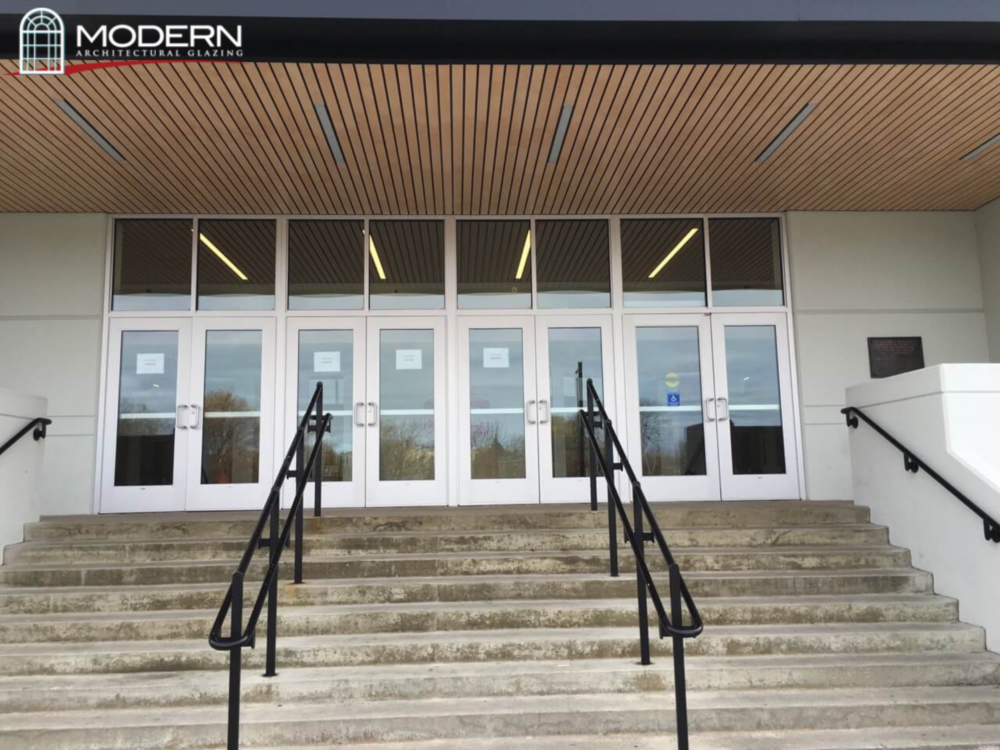
2) Performance
Another contrasting factor between storefronts and curtain walls is performance. Both architectural systems work in different ways at different heights. For example, storefronts will function well on ground levels. Structural silicones or glazing gaskets may only perform well in high-rise buildings when protected from weather elements.
These walls will also have higher air, water, and structural performance. Gaskets form the seal of the walls to keep air and moisture out. Moreover, on the higher floors, curtain walls function better. They come with unitized systems. These systems are fabricated and pre-assembled into units in the shop. Fabrication and pre-arrangement of curtain walls ensure that performance requirements are not subject to uncontrolled circumstances in the field.
In addition to this, the thermal performance of curtain walls is also much better than storefront glazing. It is significantly higher than the storefronts due to the attachment of a thermal break. The thermal break separates the pressure plate from the back members during commercial glass repair. Other features that enhance and improve the function of aluminum storefront systems include polyamide pressure plates, P&D parts, and polyamide struts.
Hence, the architectural systems are different in terms of performance and features, with curtain walls performing better in many ways.
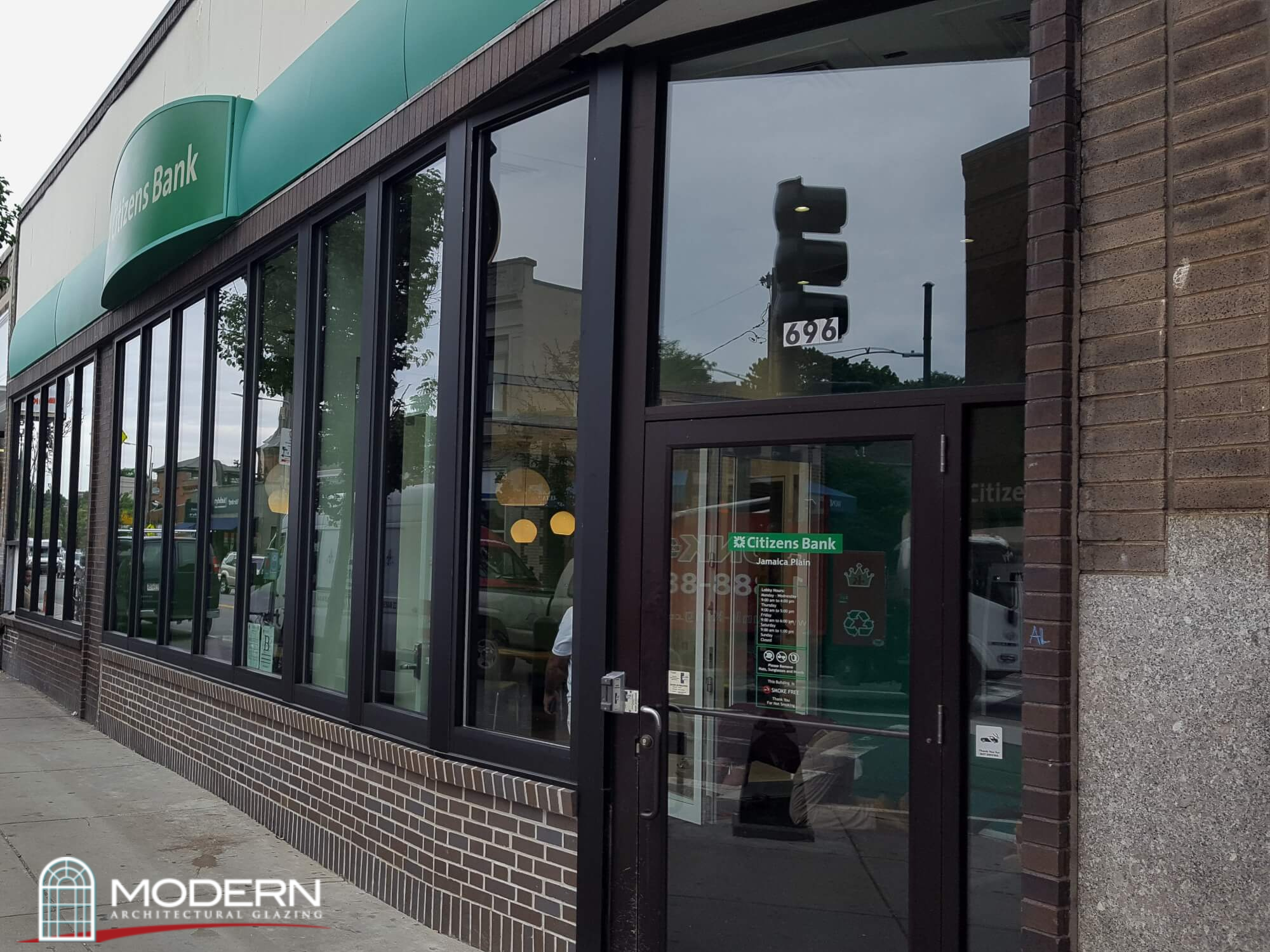
3) Water Management
Another critical difference between curtain walls and storefronts involves managing water in these systems. In a curtain wall, the weeping of each glass sill occurs separately.
Meanwhile, in a storefront system, the weeping of the whole storefront occurs at the sill. The system directs any amount of water entering the system towards the vertical mullion of the sill. Through the vertical mullion, weeping occurs through the outer part of the building. As a result, it can lead to the system becoming overloaded when the exposure to weather becomes excessive. For this reason, storefronts are typically lower in height.
As a result of its water management system, the system becomes overloaded as the exposure to weather increases. For this reason, the storefront has a limitation in height. Business owners should locate their commercial windows below the fourth floor for ideal sunlight and weather protection. In this way, weather elements may not disrupt the functionality of storefront windows.
Looking for the best commercial glass for
your business?
4) Cost
Costs linked with storefront glazing and curtain wall systems differ with various variations in the region due to the labor market. Typically, the storefront is less expensive and budget-friendly. These cheaper costs of storefronts are due to the different products and materials of preference for entrance and elevations on the first and second floors.
Curtain walls tend to be more expensive in material and labor. However, it enables architects and designers to enjoy higher flexibility in both design and performance. Other common aspects that affect the cost of both architectural structures may include the type of glass storefronts, aluminum storefront systems, or curtain walls. Your other material selections might include thermal break methods, finishing choices, and commercial canopies.
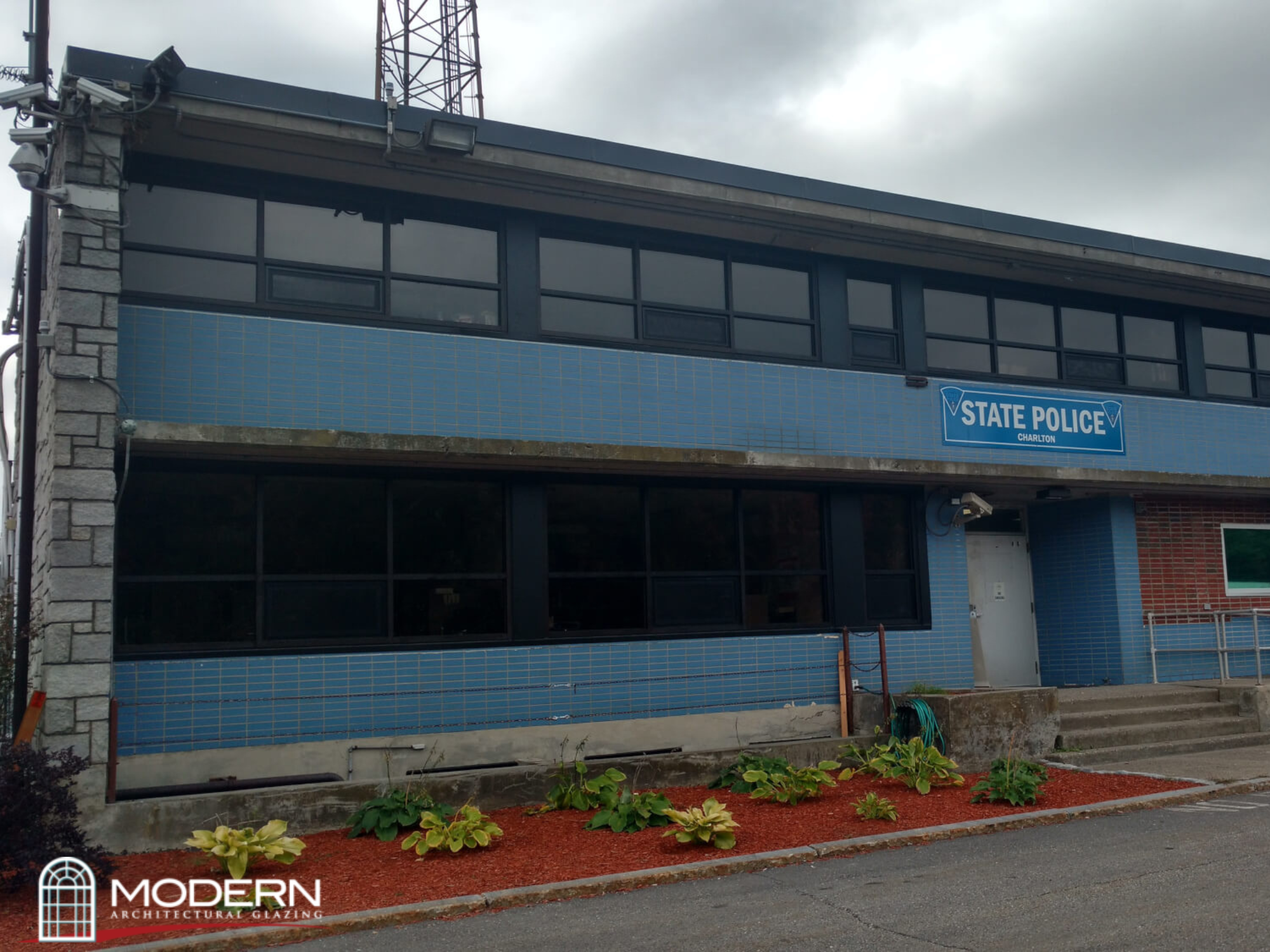
5) Longevity
Storefronts and curtain walls differ significantly in terms of their longevity and durability. While both options provide robust solutions, the curtain wall typically outlasts its counterpart due to its superior resistance to harsh environmental conditions. The structural design of curtain walls allows for better thermal efficiency, which not only contributes to energy savings but also reduces the stress placed on the materials from temperature fluctuations. This precaution makes curtain walls particularly advantageous for high-rise buildings where exposure to elements is more significant.
Moreover, the materials and construction methods used in curtain wall systems are geared toward long-term sustainability and minimal maintenance. These systems are designed to withstand the rigors of time, providing a reliable barrier against weather-related wear and tear. Consequently, businesses can expect curtain walls to require fewer repairs and replacements over their lifespan, making them a cost-effective choice in the long run. The investment in a curtain wall system translates to less frequent needs for commercial glass repairs, lower maintenance costs, and greater overall value retention of the property.
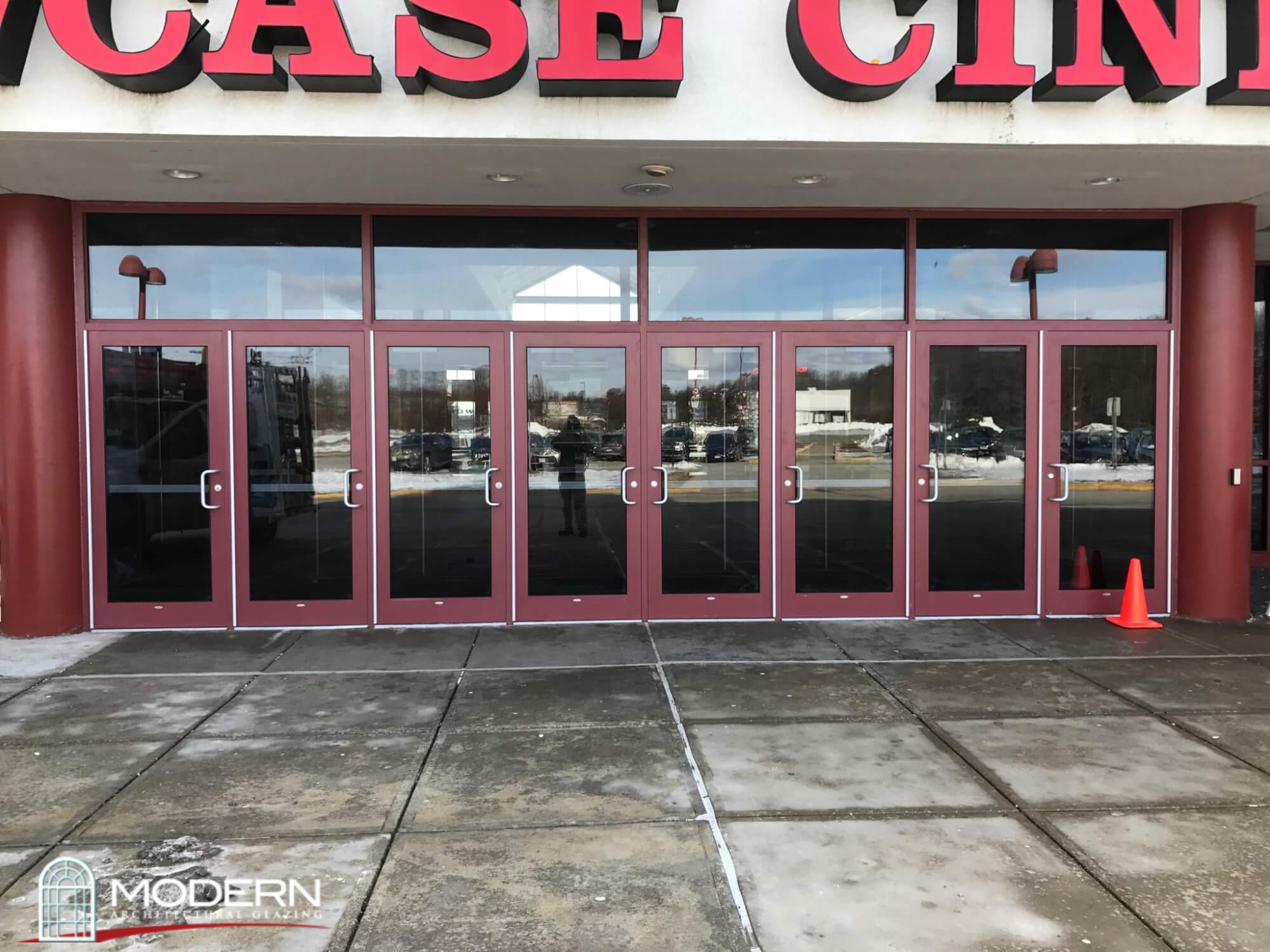
Key Takeaways
Curtain wall and storefront window replacement vary in performance, costs, duration, and water management. Some other internal factors also differentiate the curtain wall systems and storefront walls.
All in all, these are the critical differences between storefront glazing and curtain walls. Analyzing these differences can help you choose the best among various storefronts and curtain walls.
Choosing the better option may also differ according to the distinct requirements of the business owner and their business, including architectural needs, budget, and aesthetics.
In these cases, a glass installer service may come to your service to help you and ease the installation with efficiency and professionalism. At Modern Glazing, our glass installers ensure that your storefront window replacement stands out and looks unique.
Upgrade your business with
a new glass storefront!
THE HIGHEST-RATED COMMERCIAL GLASS IN MA
At Modern Glazing, we offer an extensive portfolio of commercial glass to transform your business. As MA’s leading commercial glass company, we provide versatile, durable, and functional storefront window replacements for businesses of all sizes. Since 1952, we’ve built custom architectural glass installations all over New England. View our commercial glass portfolio today to see how Modern Glazing can renovate your storefront.
Your satisfaction is our priority. We perform a walk-through upon project completion to ensure you love every detail of your glass installation.
You can also follow us on Instagram for project updates to see our latest glass installations!

